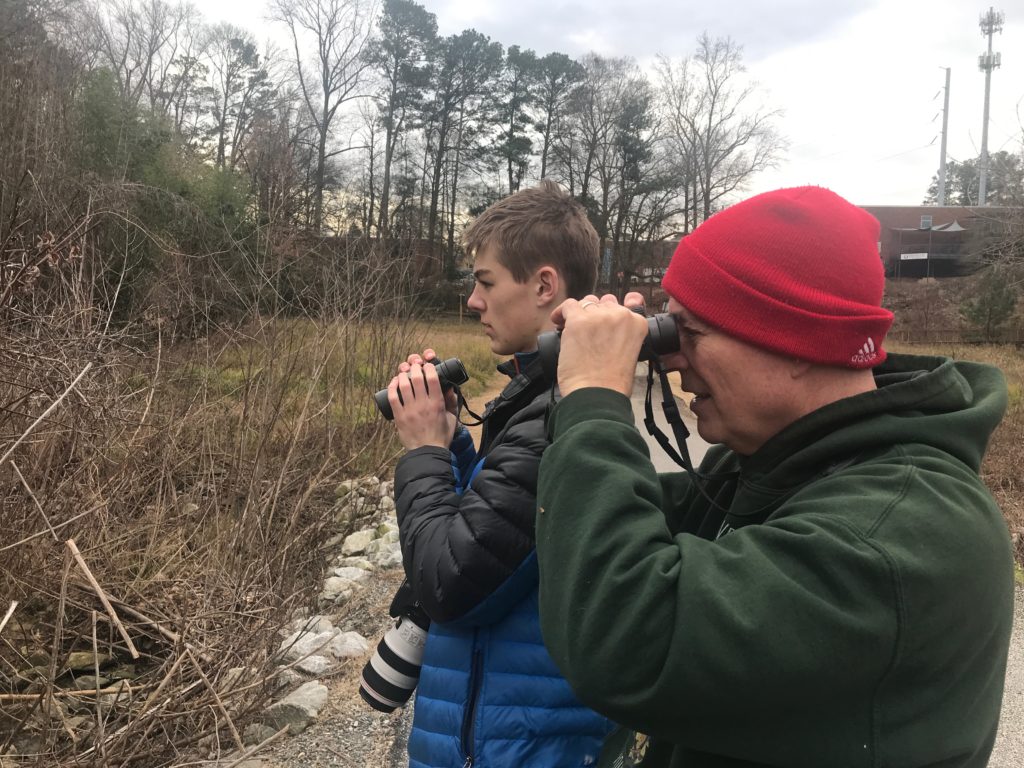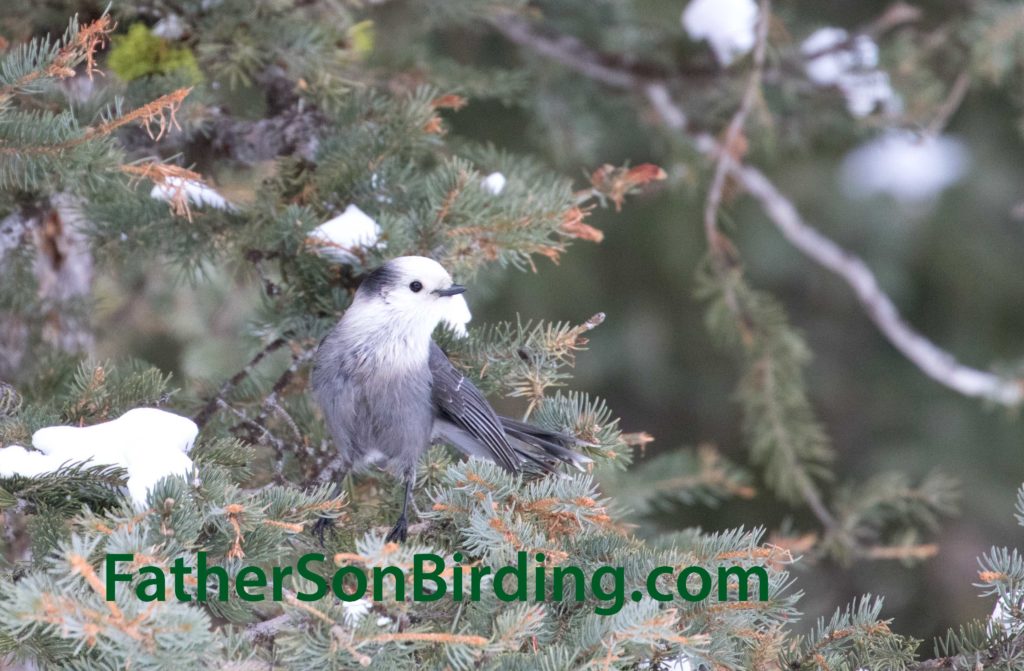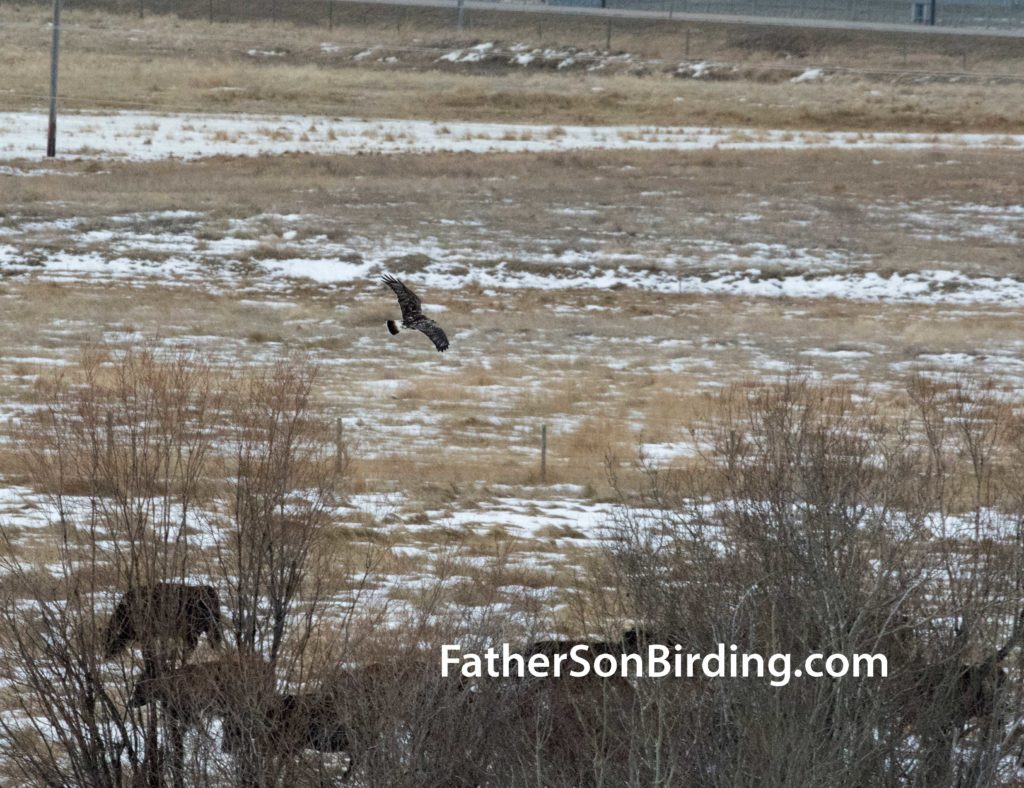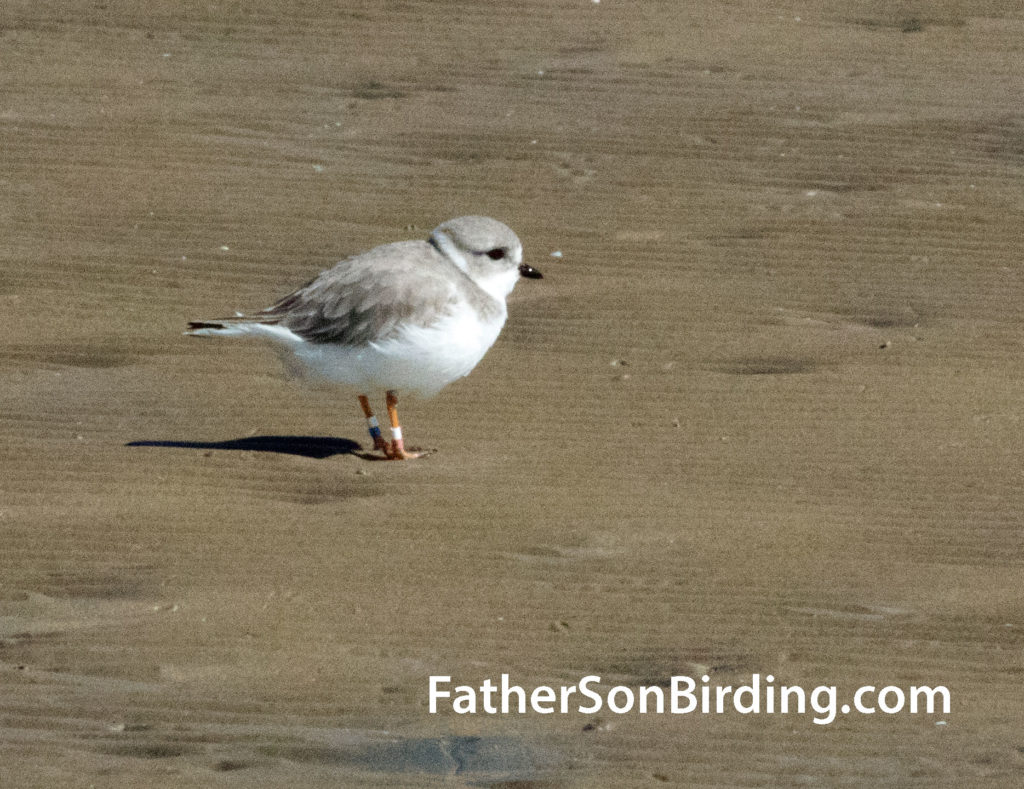To Subscribe to FatherSonBirding—and nothing else—please fill in your email address in the box down in the column to your right. Thanks!
When we were invited to my brother’s wedding in Atlanta, Braden and I immediately began wondering which birds we might encounter in the “Dogwood City” in mid-January. Our first morning there, we determined to find out by taking a loop around Piedmont Park in the company of our good friend—and famous “Hidden Figures” movie extra—Erica Brown. Almost immediately, the birds came out to meet us!

Making a loop to the north from the parking lot, we soon found common hoped-for Northern Cardinals, Blue Jays, and Carolina Chickadees, but then surprised a gorgeous Red-shouldered Hawk lurking along the stream bed. The birds only got better from there.

Continuing north, we picked up Tufted Titmouse, Ruby-crowned Kinglets, Carolina Wrens, Eastern Phoebes, and to my delight, a Golden-crowned Kinglet, which I was especially glad to see because my crummy hearing doesn’t allow me to find these by sound. Looping back on the far side of the park, I began wondering where the woodpeckers might be when I spotted a small candidate in a tree. “There’s a Downy,” I pointed to Braden. “I see it,” he said, “but that’s not a Downy. It’s a Yellow-bellied Sapsucker!” “Huh?” Turns out, we’d been looking at different birds!

Our real jackpot turned out to be a large, muddy puddle next to some dead grasses. There, we picked up Swamp, Chipping, Song, and White-throated Sparrows, Eastern Towhees, and my favorite, a pair of Brown Thrashers. All told, we bagged 28 species, far exceeding our wintry expectations. Better yet, Braden scored three Lifers: Eastern Towhee, Swamp Sparrow, and Yellow-bellied Sapsucker!

As a bonus, that night, we got to visit with the wonderful folks of Atlanta Audubon at my book signing with A Cappella Books, held at Brickworks Gallery. What a fun group! The welcoming people—and welcoming birds—left only one burning question: what could “Hot’lanta” possibly be like during spring migration? One day, we hope to find out!
Next Post: another urban birding report from my upcoming trip to San Antonio for the TCTELA Conference.


















